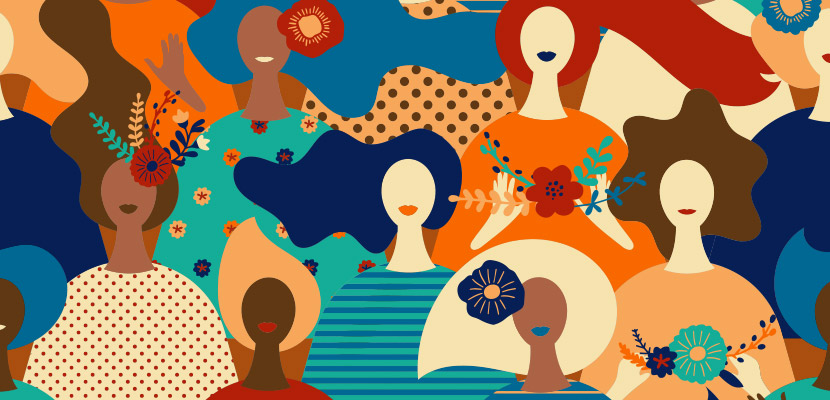Feminism in Numbers: A Quick Glance Into Women Empowerment
Featured Image: iStock/VictoriaBar
Greta Thunberg has been on the cover of Time magazine as its Person of the Year. Under PM Jacinda Arden’s leadership, New Zealand became one of the first countries that effectively controlled and eradicated Covid-19 from its population. In the U.S., the House of Representatives now has 27.1% of seats, an all-time high.
But have things really changed? The UN says, no.
According to a report from the United Nations’ Department of Economic and Social Affairs, no country in the world has achieved gender equality. In fact, the gains achieved in recent years have been severely impacted by the devastation brought on by Covid-19.
So, let’s the numbers paint the picture. Using data from OECD, UN Women, Global Citizen, and other esteemed publications, we share with you 30 statistics that show where the women stand in 2021. These numbers cover a wide range of areas of women empowerment, from gender equality at workplaces to retail discrimination, and from access to equal health and education opportunities to the right to make their own choices.
Let’s see what the numbers say.
- On average, 69.5% of men participate in the workforce compared with a female average of 53.1%. This gap widens as we move from high-income countries to low-income countries.
- Less than 50% of working-age women are part of the global labor market. And this figure hasn’t changed in the last more than two decades.
- Re: wage gap, women earn 74 cents for every dollar a man makes.
- This hard-earned money saps $80,000 from an average woman’s income in her lifetime in lieu of Pink Tax.
- Careers that are considered top-paying for women, still offer female employees less than men. Speech pathology is the only profession that’s an exception, with men and women professionals getting the same wage.
- In Northern Africa and Western Asia, women spend seven times more hours on unpaid domestic work and care compared to men.
- Globally, this average is 4.2 hours compared to 1.7 hours of men’s unpaid domestic work and care.
- This unpaid domestic work negatively impacts women’s livelihoods, economic opportunities, and restricts their potential.
- There is the same number of women present at managerial positions currently as they were in 1995: 28%. So, no change.
- Fortune 500 companies only have 37 women CEOs. A meager 7.4%.
- Enterprises have it better, with 18% of female Chief Executive Officers.
- There’s one area where we see a considerable improvement when it comes to female participation: politics.
- Globally, female representation in world parliaments has more than doubled.
- On the world stage, women now contain four times more seats in cabinets.
- In recent elections, women across the board have either voted in equal numbers as men or have exceeded their numbers.
- In recent elections, women have cast 4-7 million more votes than men.
- Currently, women around the globe hold 39% of positions that allow them to draft a new constitution.
- Things are far from ideal, though, in other areas.
- Globally, every day, an estimated 137 women are killed by a family member or a partner.
- Across Africa and the Middle East, at least 200 million girls and women have been subjected to genital mutilation. This trend is decreasing, though, and becoming less common.
- At present, there are 650 million women alive in the world that got married when they were children.
- 1 in 5 girls from around the world gets married before she’s 18; this makes 12 million girls every year.
- 46 countries in the world do not provide legal protection to women in cases of domestic abuse.
- Nigerian husbands are legally allowed to beat their wives to ‘correct’ them – as long as that beating doesn’t result in severe bodily harm. Please let that sink in.
- In the UK and some other countries, the law allows men to stake a larger claim on inheritance than their female relations.
- In 18 countries, it is perfectly legal for a husband to prevent his wife from taking up employment if he decides it isn’t in the interest of the family.
- In Jordan and Lebanon, if a woman marries a foreigner, her children have no right to claiming the citizenship of their mother’s country.
- 4 out of every 5 victims of human trafficking are girls.
- In 2011, of people who were trafficked, 21% were girls and 12% boys, 47% women and 18% men.
- American women in the military (serving in Iraq or Afghanistan) are more likely to be raped by a comrade than being killed by the enemy.
- According to UNICEF in 2016, 61 million girls were out of school.
- Countries that do not invest in girls’ education at the same level as they do boys’ lose $1 billion a year in economic growth.
So, What’s The Takeaway?
No matter what your acquaintances on Facebook say, the need for feminism is not over. So much work is pending. As you dig deep through these stats, you’ll come to realize that all economic and social indicators improve when we invest in women’s welfare and give them an equal seat on the table.
They outnumber men in global leadership, academic performance, and political participation. But the need for feminism is not to show one gender’s superiority over the others. It’s the exact opposite of it.
So, until people realize that, keep marching on, feminists! The fight continues.
Sources:

Kelvin Stiles is a tech enthusiast and works as a marketing consultant at SurveyCrest – FREE online survey software and publishing tools for academic and business use. He is also an avid blogger and a comic book fanatic.
